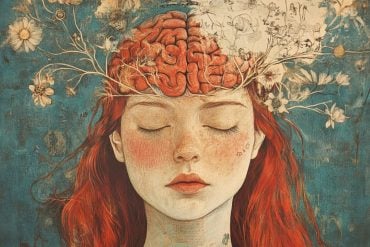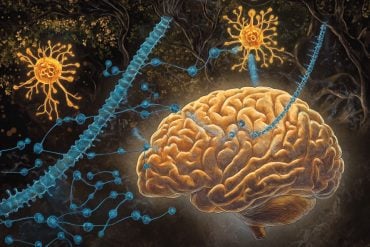Summary: Study shows how circadian clock mechanisms boost our ability to maintain our bodies when we are most active.
Source: University of Manchester
Biologists from The University of Manchester have explained for the first time why having a good night’s sleep really could prepare us for the rigours of the day ahead.
The study in mice and published in Nature Cell Biology, shows how the body clock mechanism boosts our ability to maintain our bodies when we are most active.
And because we know the body clock is less precise as we age, the discovery, argues lead author Professor Karl Kadler, may one day help unlock some of the mysteries of aging.
The discovery throws fascinating light on the body’s extracellular matrix -which provides structural and biochemical support to cells in the form of connective tissue such as bone, skin, tendon and cartilage.
Over half our body weight is matrix, and half of this is collagen – and scientists have long understood it is fully formed by the time we reach the age of 17.
But now the researchers have discovered there are two types of fibrils – the rope-like structures of collagen that are woven by the cells to form tissues.
Thicker fibrils measuring about 200 nanometres in diameter – a million million times smaller than a pinhead – are permanent and stay with us throughout our lives, unchanged from the age of 17.
But thinner fibrils measuring 50 nanometres, they find, are sacrificial, breaking as we subject the body to the rigours of the day but replenishing when we rest at night.
The collagen was observed by mass spectrometry and the mouse fibrils were observed using state of the art volumetric electron microscopy – funded by the Wellcome Trust – every 4 hours over 2 days.
When the body clock genes where knocked out in mice, the thin and thick fibrils were amalgamated randomly.
“Collagen provides the body with structure and is our most abundant protein, ensuring the integrity, elasticity and strength of the body’s connective tissue,” said Professor Kadler

“It’s intuitive to think our matrix should be worn down by wear and tear, but it isn’t and now we know why: our body clock makes an element which is sacrificial and can be replenished, protecting the permanent parts of the matrix.
He added: “So if you imagine the bricks in the walls of a room as the permanent part, the paint on the walls could be seen as the sacrificial part which needs to be replenished every so often.
“And just like you need to oil a car and keep its radiator topped up with water, these thin fibrils help maintain the body’s matrix.”
“Knowing this could have implications on understanding our biology at its most fundamental level. It might, for example, give us some deeper insight into how wounds heal, or how we age.
Source:
University of Manchester
Media Contacts:
Michael Addelman – University of Manchester
Image Source:
The image is adapted from the University of Manchester news release.
Original Research: Closed access
“Circadian control of the secretory pathway maintains collagen homeostasis”. Joan Chang, Richa Garva, Adam Pickard, Ching-Yan Chloé Yeung, Venkatesh Mallikarjun, Joe Swift, David F. Holmes, Ben Calverley, Yinhui Lu, Antony Adamson, Helena Raymond-Hayling, Oliver Jensen, Tom Shearer, Qing Jun Meng & Karl E. Kadler.
Nature Cell Biology doi:10.1038/s41556-019-0441-z.
Abstract
Circadian control of the secretory pathway maintains collagen homeostasis
Collagen is the most abundant secreted protein in vertebrates and persists throughout life without renewal. The permanency of collagen networks contrasts with both the continued synthesis of collagen throughout adulthood and the conventional transcriptional/translational homeostatic mechanisms that replace damaged proteins with new copies. Here, we show circadian clock regulation of endoplasmic reticulum-to-plasma membrane procollagen transport by the sequential rhythmic expression of SEC61, TANGO1, PDE4D and VPS33B. The result is nocturnal procollagen synthesis and daytime collagen fibril assembly in mice. Rhythmic collagen degradation by CTSK maintains collagen homeostasis. This circadian cycle of collagen synthesis and degradation affects a pool of newly synthesized collagen, while maintaining the persistent collagen network. Disabling the circadian clock causes abnormal collagen fibrils and collagen accumulation, which are reduced in vitro by the NR1D1 and CRY1/2 agonists SR9009 and KL001, respectively. In conclusion, our study has identified a circadian clock mechanism of protein homeostasis wherein a sacrificial pool of collagen maintains tissue function.






